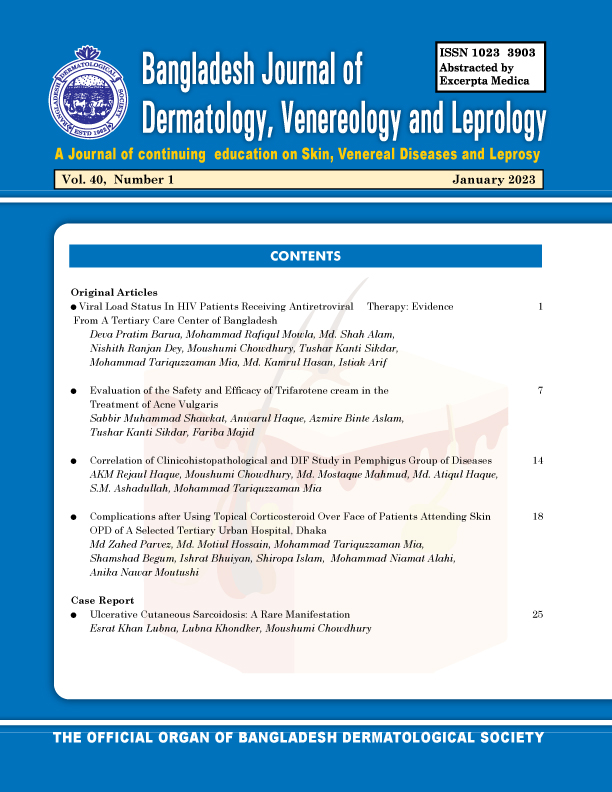Calcineurin inhibitors are used as first line alternative of topical corticosteroids
in recent years in the treatment of Discoid lupus erythethematosus (DLE).
We aim to evaluate the efficacy and safety of topical tacrolimus 0.1% versus
topical halobetasol propionate 0.05% in patients with DLE.
This comparative study was carried out in the Department of
Dermatology and Venereology, Chittagong Medical College Hospital (CMCH), Bangladesh
between the period of July, 2018 and June, 2019. The change of DLE activity assessed with
the Cutaneous Lupus Erythematosus Disease Area and Severity Index (CLASI) was used as
a primary outcome measure.
The effective sample was 40 patients in each group. Both groups were similar in
terms of baseline demographic and clinical characteristics. After eight weeks of treatment,
the mean total erythema score was decreased signiûcantly in both groups [in tacrolimus
treated group (TTG) from 12.53±8.05 to 8.03±5.69, (p <0.001) and halobetasol propionate
treated group (HTG) from 11.83±7.17 to 7.30±4.56 (p<0.001)]. The mean total scale/
hypertrophy score decreased signiûcantly in both groups [in TTG from 8.08±5.30 to 4.33±3.21;
(p <0.001) and in HTG from 7.40±4.73 to 3.68±2.01, (p<0.001). And the magnitude of reduction
was significantly better in HTG (p= 0.032)]. The mean total activity score was decreased
signiûcantly in both groups [in TTG from 22.95±13.40 to 14.33±8.89, (p <0.001) and HTG
from 22.15±11.95 to 13.7±7.22, (p<0.001)].
The present study demonstrated that, tacrolimus 0.1% ointment and halobetasol
propionate 0.05% ointment had a comparable efficacy; however, halobetasol showed
significantly better improvement regarding scaly, hypertrophic lesions in DLE patients.
Topical tacrolimus, Topical halobetasol propionate, Hydroxychloroquine, DLE

